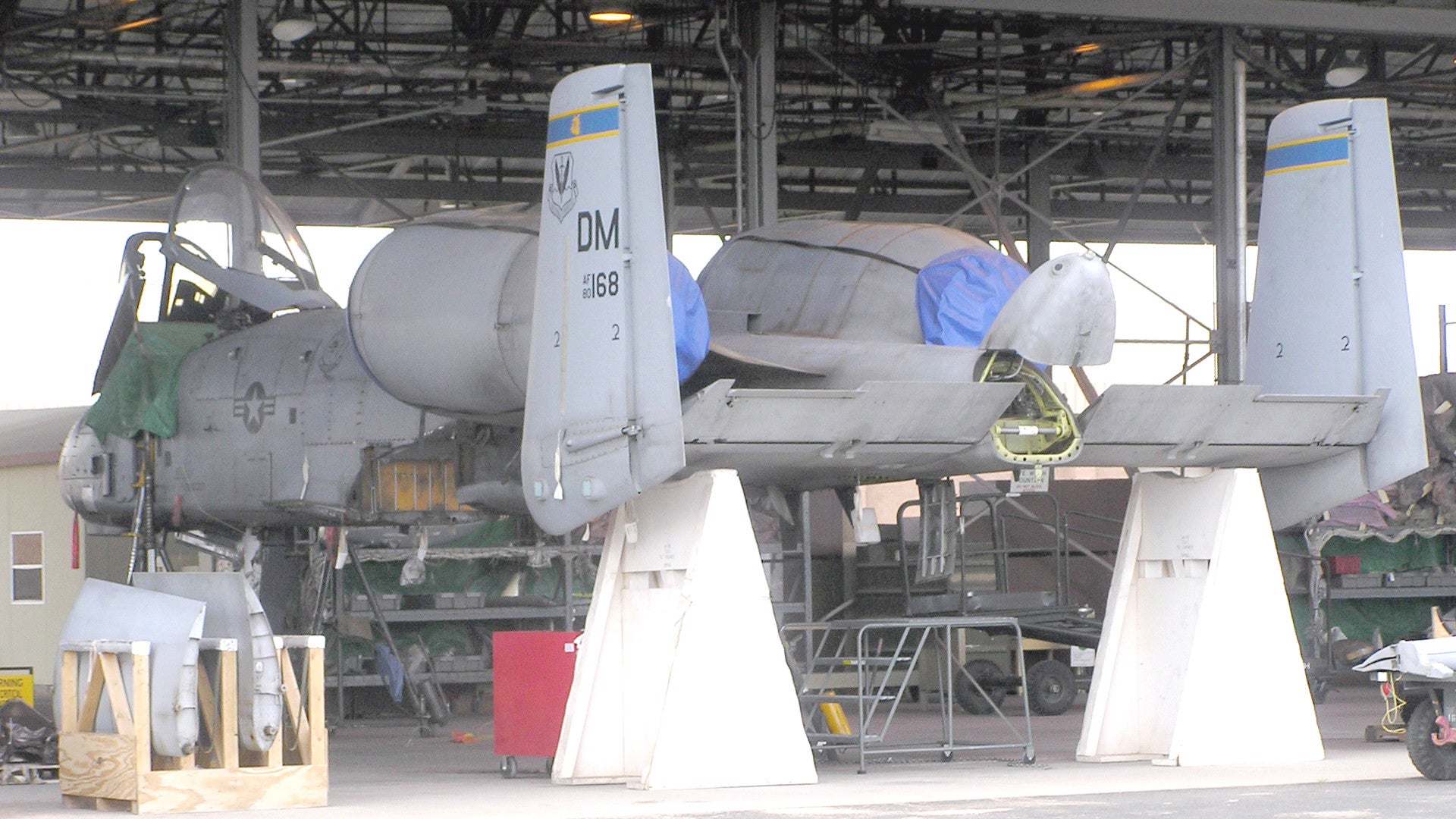The U.S. Air Force is warning that it may have to ground more than 100 A-10 Warthog ground attack aircraft as early as next year, even if Congress does decide to add billions to its budget for critical replacement wings. At the same time, the service, along with the U.S. Marine Corps and Navy, are considering halting upgrade work on possibly dozens of F-35 Joint Strike Fighters, the Warthog’s ostensible replacement, which would leave them unable to fight.
The two revelations came separately over the course of the Air Force Association’s (AFA) 2017 Air, Space, and Cyber Conference, which began on Sept. 18, the Air Force’s birthday, and ends on Sept. 20, 2017. The annual event offers senior leaders an opportunity to speak on the state of the service, their priorities, and their concerns.
“We’re trying to work through to see if we can get to the point where we will not have to ground airplanes waiting to get wings, but as it stands right now, we will have to ground airplanes while we work through getting additional wings,” U.S. Air Force General Ellen Pawlikowski, head of Air Force Materiel Command, told Defense News in an interview on the sidelines of AFA conference. “What we will do, is we will have to manage the fleet in order to provide sufficient jets, particularly for the squadrons that are deploying in support to operations. But aircraft availability will be impacted due to the fact that we will not have sufficient wings to maintain the current aircraft availability.”
At present, the Air Force has more than 280 A-10s in total, with nearly 110 of them still awaiting new wings. The service just lost two aircraft in an accident earlier in September 2017.
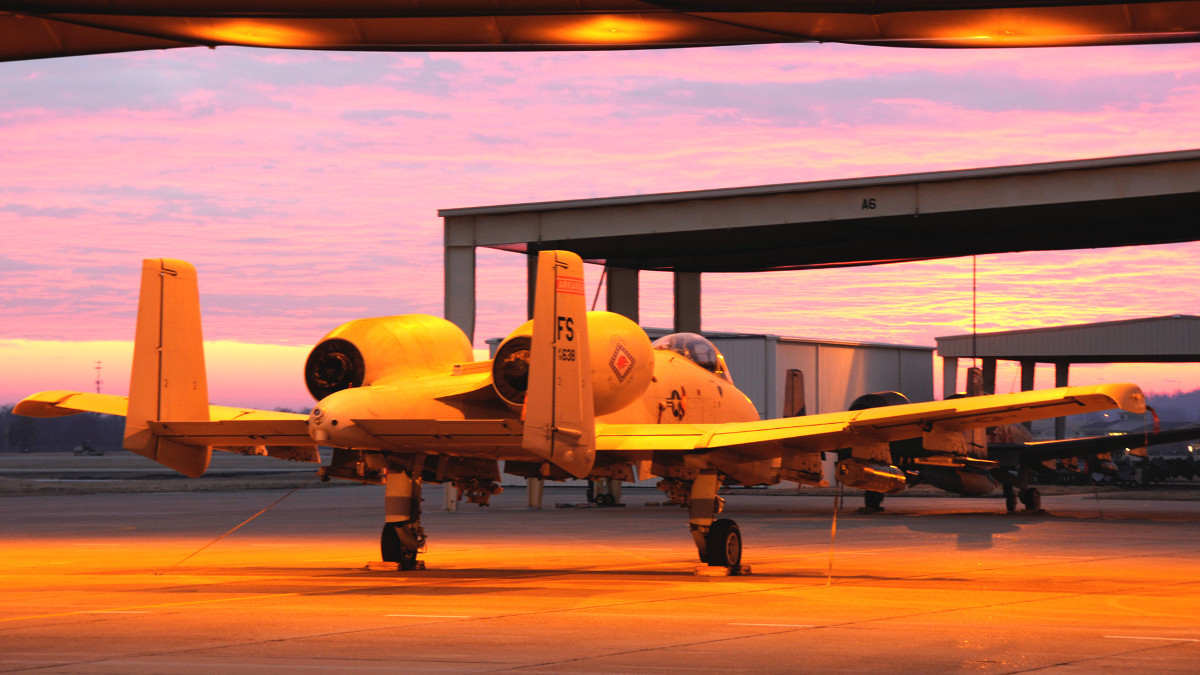
A-10s continue to be an important part of the fight against ISIS in Iraq and the standing defense of South Korea, and the jets routinely travel to Europe and elsewhere around the world to reassure American allies concerned about regional security threats. Air Force Materiel Command said the unmodified aircraft could end up grounded as early as the 2018 fiscal year, which begins on Oct. 1, 2017. There is a possibility that new wings scavenged from aircraft in storage at the Bone Yard could alleviate some of the issues, but Air Force Materiel Command’s top officer said that option would only give the aircraft “a few more hours.”
Echoing comments from Secretary of the Air Force Heather Wilson and other Air Force officials at AFA, General Pawlikowski laid the blame for the situation squarely on budget cuts and caps, along with the inability of Congress to approve a full, fiscal year-long budget, instead relying on short-term funding bills, known as “continuing resolutions.” In addition, she cited delays at Boeing, where a parts defect had slowed the production of the new wing sections.
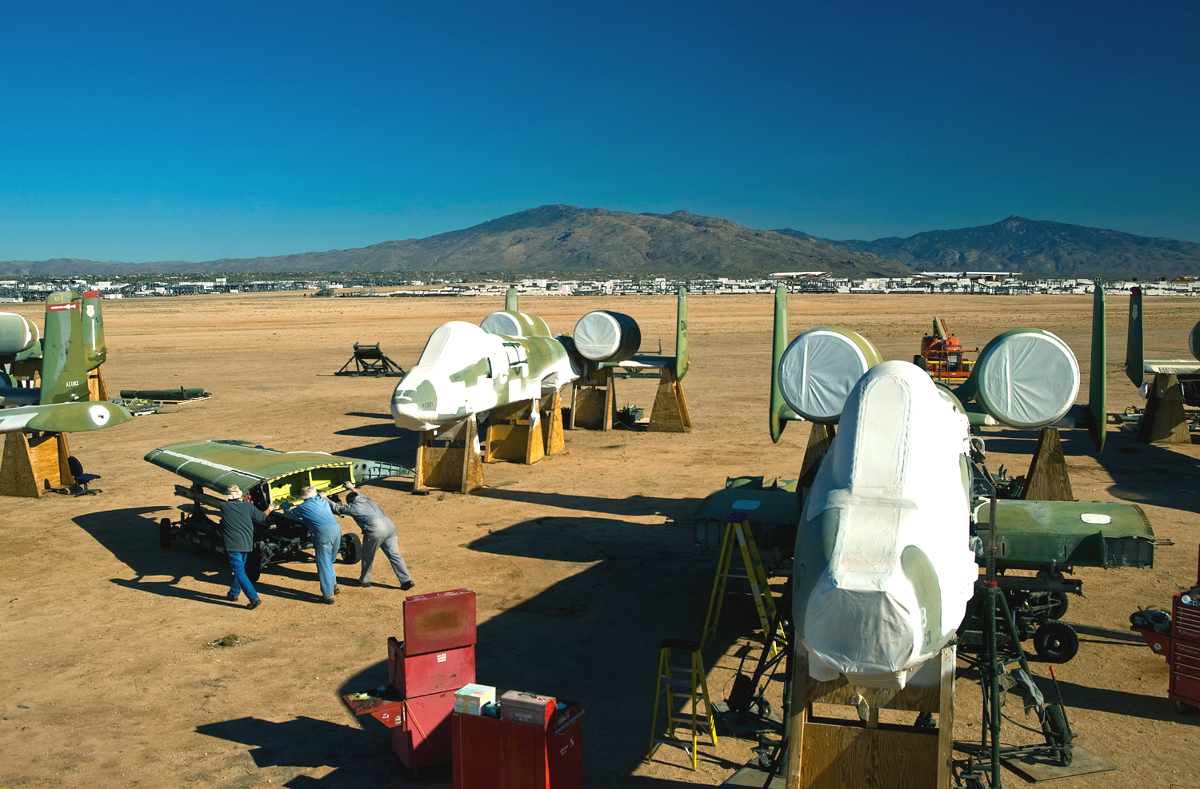
“Our opportunity to go get moving on that competition to award a new contract to get those additional wings is delayed until we can get an actual appropriation,” Pawlikowski told Defense News. “I can’t do that work under a continuing resolution.”
While these budget problems were certain factors, she did not mention how the Air Force had consciously cut funding for any major upgrade work or even depot-level maintenance across he A-10 fleet during the 1990s. The service effectively waited right until the last moment in 2007 to begin the rewing process at all, which it had understood would be necessary for some time, issues I have noted many times in the past.
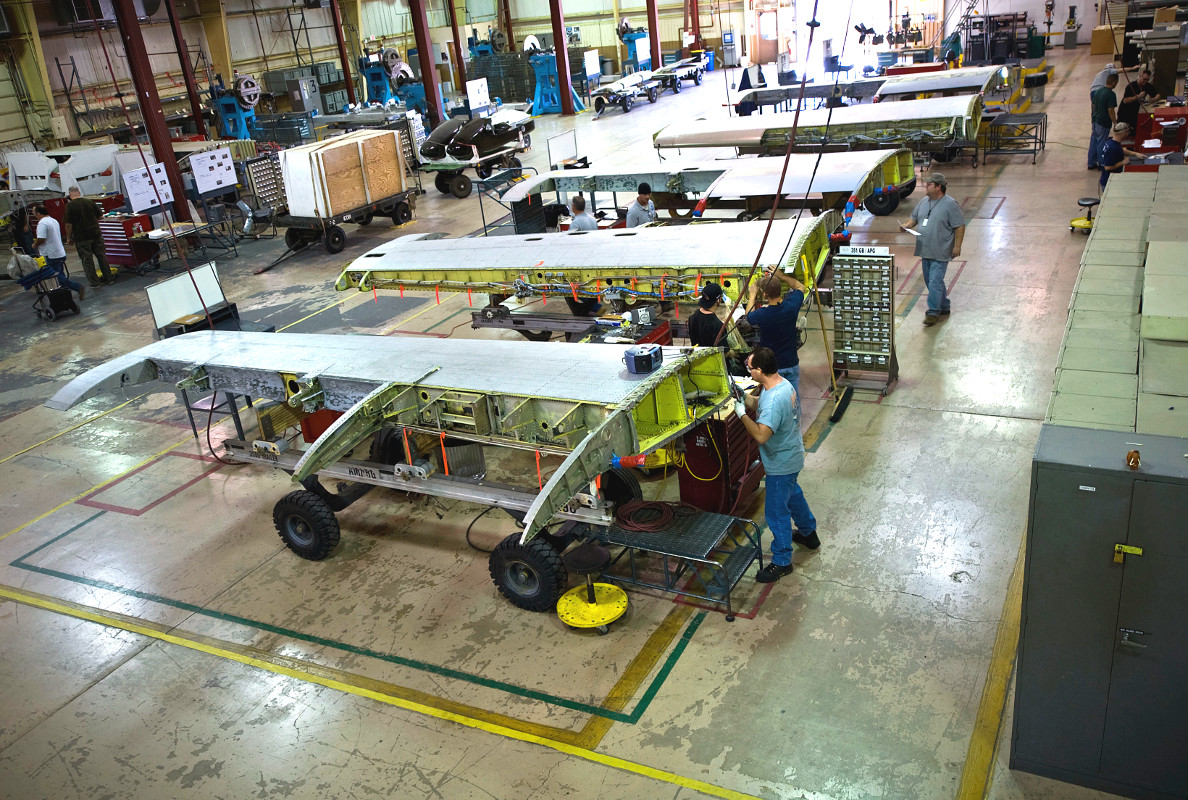
Working from this existing, self-imposed disadvantage, the Air Force had compounded the issue by deciding to focus its limited resources on other projects, despite the relatively low cost of the rewing effort. In 2011, the service itself said that it would save a modest $500 million – the difference between keeping more than hundred capable aircraft airworthy or buying, at most, around fjve F-35 stealth fighters – by ending the upgrade program early, leaving dozens of Warthogs without the replacement spans.
This is not to mention the Air Force’s repeated attempts to send the aircraft to the boneyard since then, too. The service even suggested it was actively working on a direct replacement for the Warthogs, when it apparently quietly stopped that effort without telling anyone.
In its latest budget request for the 2018 fiscal year, the Air Force again declined to request any money for new A-10 wings, instead shunting it into its “unfunded priorities list.” Each service sends one of these wish lists to Congress every fiscal year, hoping legislators will decide to add additional money for these projects.
The problem now is that even if Congress does pass a full budget, decides to inject more cash into the Air Force for the A-10 rewing program, and does so in a timely manner, Warthogs without the new wings will likely hit their maximum safe flight hours before the new spans even arrive. This means that even under a best case scenario, the unmodified jets will be sitting idle under the work is done.
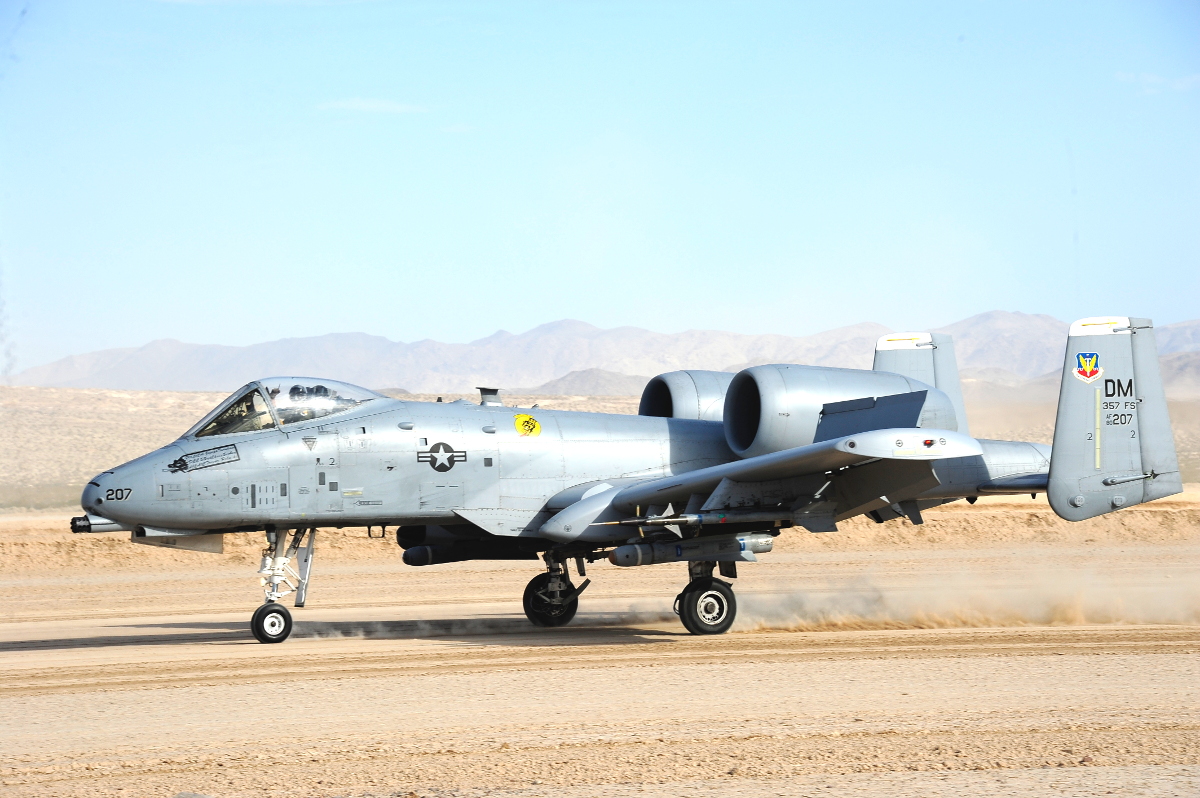
The Air Force has long argued that upgrading the Warthogs is an easy thing to cut since it expects to replace the fleet of ground attackers with the F-35 in the near future, anyways. Unfortunately, as the service grapples with the almost inevitable grounding of more than a third of the A-10s for some amount of time, the U.S. military as a whole is apparently beginning to question whether or not it is cost effective to update potentially dozens of the Joint Strike Fighters the services already own and make them combat capable.
“From a production perspective, we have literally 150 to 160 modifications that have to occur on some of our tails to get it to a Block 3 configuration,” U.S. Navy Vice Admiral Mathias Winter, the head of the F-35 Joint Program Office (JPO) oversee the project for the Air Force, Marines, and Navy, said on Sept. 18, 2017 at the AFA conference. “Our mods program is almost as exciting and dwarfing our production program.”
Winter didn’t explain what would happen to the aircraft left running the older Block 2 software versions, but it is likely that they would continue to perform testing or training missions. However, the planes would not be able to help train pilots on a variety of functions that are absent from the older code, including employment of many types of weapons, including the internal 25mm cannon on the Air Force’s A model.
“You’re going to see us continuing to do a business-case analysis of retrofit of these aircraft,” Air Force Chief of Staff General David Golfein said in a separate AFA speech on Sept. 19, 2017. He stressed that the service had made similar decisions with regards to the upgrade of other fighter jets in the past, according to Aviation Week.
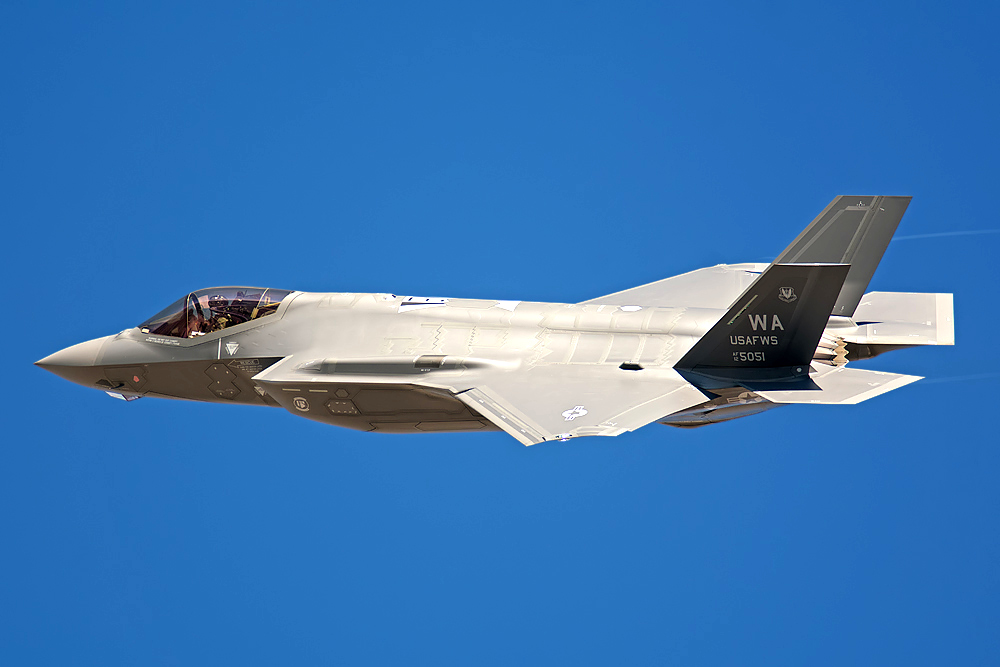
While this is true, the Lockheed Martin and the F-35 JPO have specifically pitched the idea of buying the aircraft up front and upgrading them later, a concept known as concurrency, as a cost-saving measure for years now. It was the entire point of buying so many aircraft up front to begin with.
If the steady drop in F-35 unit prices make it cheaper to buy new than to update a significant number of Joint Strike Fighters it will be a clear admission that the concurrency plan did not save money. On top of that, it will prove what many have argued for some time, that the cost of upgrades and reworks, which the U.S. military largely hid from public scrutiny, was in many cases exhaustively expensive.
In 2015, The War Zone’s own Tyler Rogoway, then writing for Foxtrot Alpha, predicted this outcome, writing:
Putting an aircraft, especially one of the most complex on the planet, into production before testing is even close to being complete also results in fleet management and sustainability hell.
This is because the myriad of retrofits required to jets of different blocks result in “fleets within fleets within fleets” of the same aircraft type. These post production fixes also represent a very expensive opportunity cost as the customer (the DoD, the American government, and by extension, average Americans) ends up buying literally throngs of incredibly costly, patched-up aircraft that will never fully meet their later production cousins design capabilities or lifespan.
Keep in mind that these retrofits and post-production fixes, many of which happen at a depot level, do not include other upgrades that will be needed to give the F-35 parity in some respects to 4th generation fighters it intends to replace.
So to clarify, because of the large production run of the item, the F-35 in this case, concurrency may be fiscal and organizational insanity, but the problems found during testing are theoretically solvable if you are willing to throw away many very expensive stealth jets and burn through lots of precious flight time on your existing, already overused and aging, fighter fleet in the process.
Some upgrades may be unavoidable, as well. Whether or not the earlier models are as durable and have an overall airframe lifespan similar to more recent examples is a reasonable question. Beyond that, various F-35s are experiencing issues with their on-board oxygen generation systems (OBOGS) and there continue to be serious concerns about the safety of the aircraft’s ejection seat and other components of the overall pilot egress system.

In May 2017, the Air Force announced the ejection seat issues were over, even though it had only installed a new seat in one F-35. On Sept. 18, 2017, Roll Call revealed that the service had accepted a significant amount of continued risk to its pilots, which would remain the case even after contractors finished the ejection system modifications.
A risk analysis report Roll Call obtained said that an estimated more than 20 pilots were still statistically likely to die or suffer injuries in “off-nominal” conditions. The experts suggested that additional tests over the course of nine to 12 months, costing less $1 million, would help eliminate these concerns. The Air Force declined to go that route.
Also on Sept. 18, 2017, the Air Force announced it was making changes to the flight vest and breathing mask pilots flying the F-35, to help reduce hypoxia-like symptoms as it keeps searching for the root cause of the problems. The modifications to the vest reduce its overall weight and therefore the strain it might take to breath under certain conditions. Investigators identified a faulty valve in the mask that could be choking fliers, as well.
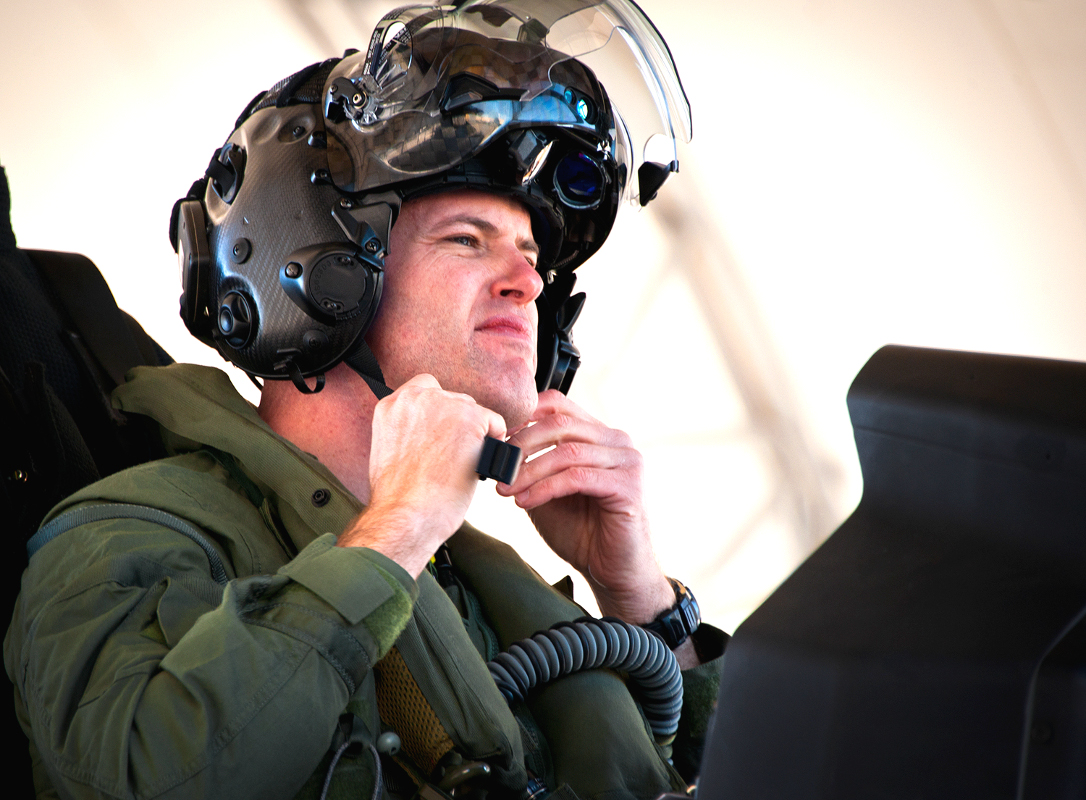
All told, is that it is possible that the Air Force may end up with far fewer combat capable F-35As than it planned to have in service as it phased out the A-10s. It already seemed clear that the service had largely abandoned the idea of getting hundreds of Joint Strike Fighters into service any time soon when it decided it would dramatically extend the service life of hundreds of F-16 Viper fighter jets.
In turn, with so many Warthogs expected to end up sidelines, this could have an impact on the ability of units to deploy for routine training missions, to support existing operations, or be ready for future contingencies. The Air Force claims its Joint Strike Fighters will be “fully combat capable” by the end of 2017, but you can read The War Zone’s in-depth analysis of that claim here. Suffice to say, the jets still require a significant amount of testing before they enter full service.
All of this could only have a direct impact on the decision making regarding the fate of the A-10s, as well as the F-15C fleet, which the Air Force is also considering retiring over the course of the next few years. Reports suggest the service will finalize both of those plans before the end of 2017, but they both rely in no small part on the availability of F-35As to take the place of the older aircraft.
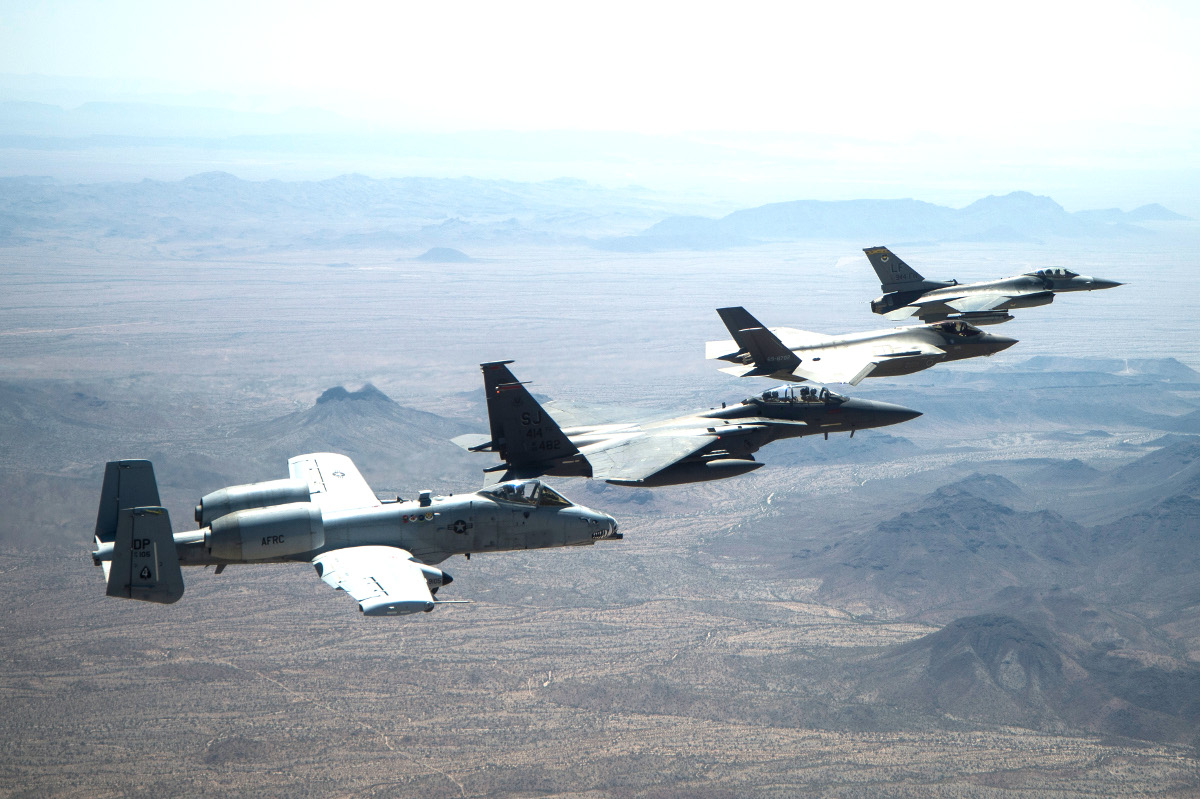
As always, there is a larger question of where the money and personnel for any of these future force structures will come from in the end. In addition to its budget concerns, the Air Force is scrambling to stop the exodus of pilots and make up for a serious shortfall of hundreds of aviators.
It’s a perfect storm of sorts and it may be too late to stop, at least in the near term. There’s already very real concern that the Air Force won’t be able to afford its present fighter jet fleets past 2021 and there may not be pilots to fly them, either.
Whatever happens, it’s safe to say the Air Force has a number of hard choices ahead of it.
Contact the author: joe@thedrive.com
